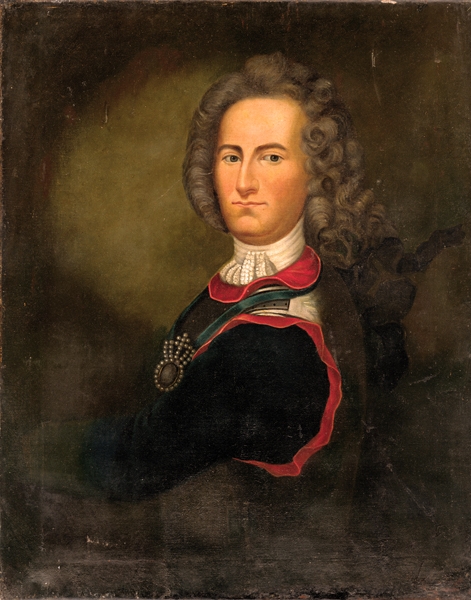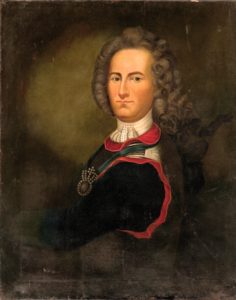Louis Billouart, Chevalier de Kerlerec
French naval officer Louis Billouart, Chevalier de Kerlerec served as governor of Louisiana between 1753 and 1763.

Courtesy of Louisiana State Museum
Louis Billouart, Chevalier de Kerlerec. Unidentified
French naval officer Louis Billouart, Chevalier de Kerlérec served as governor of Louisiana between 1753 and 1763. Though he inherited a neglected colony with a relatively weak military, Kerlérec managed to mount an aggressive defense of the Mississippi Valley when the British threatened to expand their territory. A bitter struggle with Ordonnateur Vincent de Rochemore, however, limited Kerlérec’s successes, crippled Louisiana’s civilian government, and temporarily landed him in the Bastille.
Louis Billouart, Chevalier de Kerlérec was born on June 27, 1704 in Quimper, France, to Guillaume Billouart, Sieur de Quervasegan, and Louise de Lansullyen. He served as a volunteer seaman in three French naval campaigns from 1718 to 1720, the last of which took him to Louisiana. In 1721 he was commissioned navy guard but subsequently left the military to command a merchant vessel engaged in the Antilles and West African trade. Kerlérec reenlisted in the military in 1726, however, and participated in the French campaign against the Natchez Indians in Louisiana in 1730. He was promoted to ship’s ensign in 1731 and took part in French naval operations against Barbary pirates the next year.
Between 1734 and 1737, Kerlérec completed three routine tours of duty aboard French men-of-war. During an engagement with a British squadron off the coast of St. Domingue in 1740, he was severely wounded in the back. After being promoted to ship’s lieutenant in 1741, Kerlérec was assigned to convoy duty in the Atlantic. In command of the frigate Neptune in 1745, Kerlérec injured his right foot and both ears during a battle between British and French fleets. He was captured, forced to surrender his sinking vessel, and taken to a prisoner-of-war camp at Spithead in England. Following the War of Austrian Succession (1740–48), he was allowed to return to France where he was promoted to ship’s captain in 1751.
During Kerlérec’s tenure as governor, he maintained relations with the Cherokee and other powerful Native American tribes by offering gifts, preferring bribery to war. Within the colony, however, his relationship with colonial administrator Vincent de Rochemore proved more difficult to navigate and the two were embroiled in a constant power struggle. Initially, Kerlérec gained the upper hand by having Rochemore placed under his control in 1760 and then recalled to France. In 1763, however, Rochemore used his own political influence to have Kerlérec recalled, accusing him of violating the king’s orders.
On his return to France in 1763, Kerlérec was imprisoned in the Bastille. He was exiled from Paris in 1769 and ordered to remain at least thirty leagues from any royal residence. Legally exonerated of all charges on September 3, 1770, Kerlérec died on September 8 in Paris, just days after clearing his name.
Adapted from Carl A. Brasseaux’s entry for the Dictionary of Louisiana Biography, a publication of the Louisiana Historical Association in cooperation with the Center for Louisiana Studies at the University of Louisiana, Lafayette.
Sources: Marc de Villiers du Terrage, Les Dernières Années de la Louisiane française (1903); P. Levot, “Kerlérec, Louis Billouart, chevalier de,” Nouvelle Biographie générale de depuis les temps les plus recules jusqu’a nos jours … (1861), XXVII.
